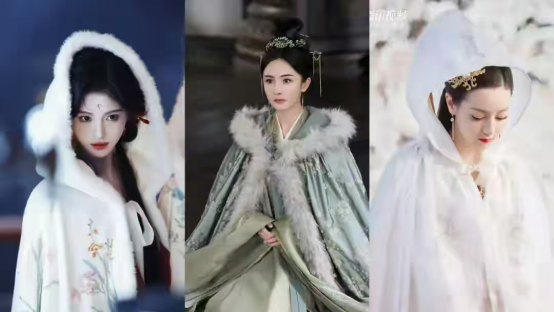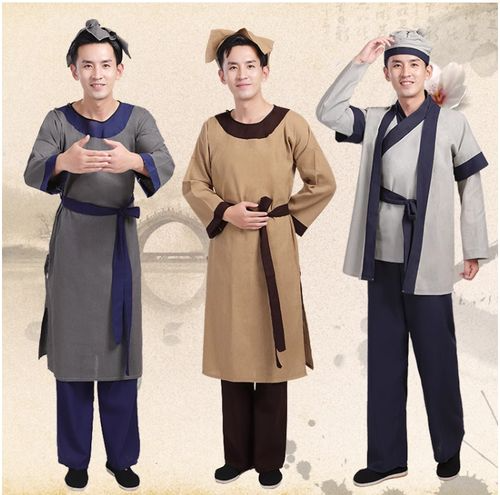In recent years, Hanfu culture has gained increasing popularity beyond its niche. It has attracted much attention and love. People are eager to wear Hanfu to experience the unique clothing feeling it brings. They are immersed in the subtle influence of traditional culture.
Every style and accessory in the world of Hanfu has a rich background and plays a key role. Today, we will start with the hooded cape – a must-have Hanfu item for autumn and winter. We will take you to experience its unique charm.
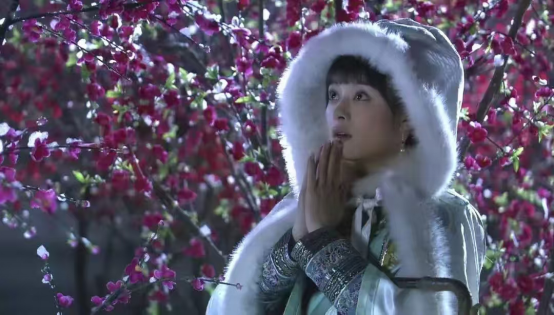
Women’s Hooded Capes
Hooded capes come in various types, each with a distinct style. Women’s hooded capes are quite common in the Hanfu system.Most of these capes use silk and brocade, paired with thick cotton linings. They are further enhanced with techniques like embroidery and piping to create beautiful styles.One common style is the Ming-style stand-collar hooded cape. It usually reaches the knees. Its brim is decorated with fleece trim. The Ming-style highlights elegance and luxury while maintaining grace.Another common style is the Song-style hooded cape. Its basic structure is similar to the Ming-style. But it is simpler and more understated in decoration. It often uses plain cotton-linen fabrics, emphasizing a fresh and natural charm.Modern long women’s hooded capes reach the ankles. They retain the basic style of traditional capes. Their outer layer uses more practical windproof fabrics. Long black hooded capes have been popular in recent years.
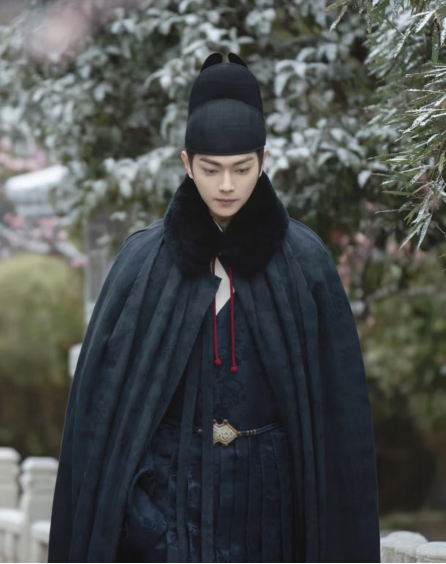
Men’s Hooded Capes
Most common men’s hooded capes are based on the Ming style. For example, there are hooded capes designed like Ming-style daopao (a traditional robe coat).They often use calm color tones such as dark blue, dark green, and black. The hood shape is neat and square, matching the scholarly elegance of traditional scholars.Modern men’s hooded capes mostly follow the Ming-style design. They add more modern elements in decoration and fabric selection. Practical designs are also included, such as windproof treatment for the brim and innovations in drawstrings.
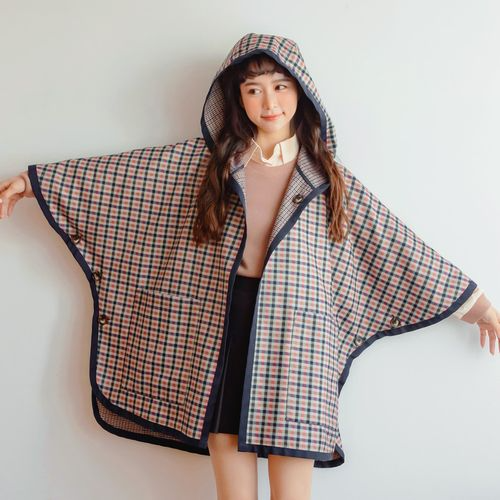
Functions of Hooded Capes
As the demand for Hooded capes grows in autumn and winter, people have higher requirements for their functionality.Innovative hooded capes with pockets have appeared. These capes solve the problem that traditional capes cannot store items. They make it easy for modern people to take things when going out.Designers skillfully place the pockets inside the cape or use an invisible design. This meets real-life needs without affecting the overall beauty.More interestingly, the fashion appeal of capes has also spread to medieval fantasy capes. Though they have different cultural backgrounds, they share a similar silhouette and sense of mystery.
Some Hanfu designers draw inspiration from this. They retain the basic structure of Hanfu capes and add more dramatic hood shapes and elements. This creates a unique “Chinese-style fantasy” cape style.

Materials of Hooded Capes
Traditional materials for hooded capes include wool,real silk and cloud cotton. To meet more people’s needs, modern materials are more popular. These include wool tweed, windproof and waterproof fabrics, and blended fabrics.
Modern designs also focus on practicality:
Detachable hoods
Snap buttons and magnetic buckles (for easy use)
The embroidery patterns on hooded capes are a major highlight. Patterns like cloud patterns, interlocking branch patterns, and baoxiang flowers (traditional Buddhist decorative flowers) fully show traditional aesthetic culture.
The edges of the capes also use exquisite piping techniques. This adds more charm and depth to the overall design.
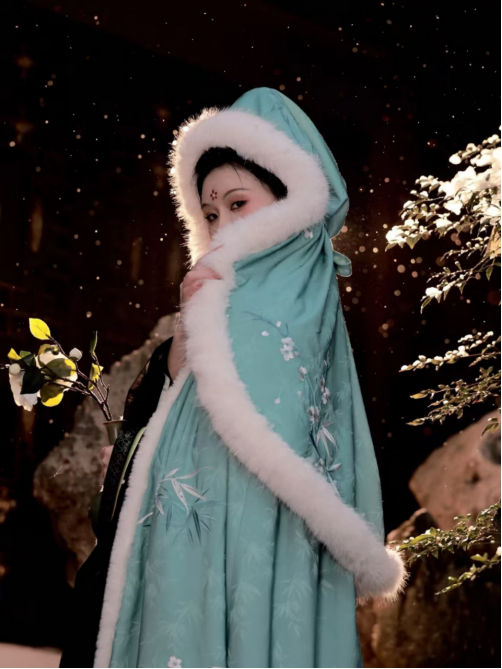
Common Q&A for Consumers
As more people love hooded capes, questions about wearing and choosing them often arise. Here are answers to two common questions:
1. How to mix and match Hanfu hooded capes?
Hanfu hooded capes are very versatile. Different styles can be mixed and matched:
Short hooded capes can be paired with jeans and boots, or with fitted clothes and pants. Consider color matching, body shape, and style when pairing.
Longer capes can be worn directly over modern dresses as an outer layer in cold weather. Ensure the colors and patterns match well.
2. What details to note when buying a hooded cape?
First, consider the wearing scenario: For daily wear, choose knee-length capes with lightweight materials. For formal occasions, choose long styles.
Second, check if the hood fits your head properly (to ensure coverage and comfort) and if the shoulders have enough room for movement.
Third, pay attention to the quality of the lining. Choose linings made of natural materials (like real silk) – they are warm and breathable, so you won’t feel stuffy.

